Ultimate Guide to House Extension: Planning Permission, Design, and Home Extension Cost for Homeowners.
As the housing market becomes more competitive, homeowners are exploring house extensions to make the most of their properties. House extensions offer an excellent chance to increase your living space, boost property value, and create a personalized environment that suits your lifestyle perfectly. To help you embark on a successful extension project, this guide delves into the intricacies of house extensions, providing valuable insights and practical advice. Before starting a house extension project, it is essential to consider various factors such as budget, planning permission, design, and materials. Hiring an experienced architect or builder can be beneficial as they can provide expert advice on these aspects. You need to have a clear idea of what you want from the extension – whether it’s an additional bedroom or a larger kitchen-dining area. The type of house extension you choose will also depend on your budget and available space. A rear extension is a popular choice as it maximizes the available space and often provides access to the garden. Side extensions can also be a viable option if there is enough space available on one side of your property. When it comes to materials for your house extension, there are many options available. Brickwork is popular due to its durability and aesthetic appeal, while timber cladding provides a natural look that works well in rural areas. Glass extensions are also becoming increasingly popular as they can create bright and airy spaces that blend seamlessly with the outdoors. Finally, it’s important to ensure that any house extension project complies with building regulations and planning permission requirements. Failing to do so can lead to legal complications down the line. With careful planning and attention to detail, a house extension can transform your home into the perfect living space for you and your family.
What is a House Extension?


A house extension is a deliberate physical expansion of a property to increase living space, add extra rooms, or improve the overall size and value of your home. A well-planned extension can be an excellent investment if you want to raise the value of your home or increase your floor space. In fact, by increasing the size of your home, you can significantly boost its value, especially if you intend to sell it in the future. An extension can provide a range of benefits, including more room for entertaining guests and family members, additional storage space or even a home office. Before embarking on a house extension , it is essential to assess several factors such as planning permission requirements and building regulations. You should also consider hiring an experienced architect or builder who can help you design and execute your vision effectively. Moreover, while an extension may seem like an expensive undertaking, it can prove to be cost-effective in the long run when compared to moving to a larger property. It also allows you to remain in the same area and maintain a sense of continuity with your surroundings. Ultimately, investing in a house extension will not only enhance your quality of life but also increase the value of your house.
Benefits of Build an Extensions
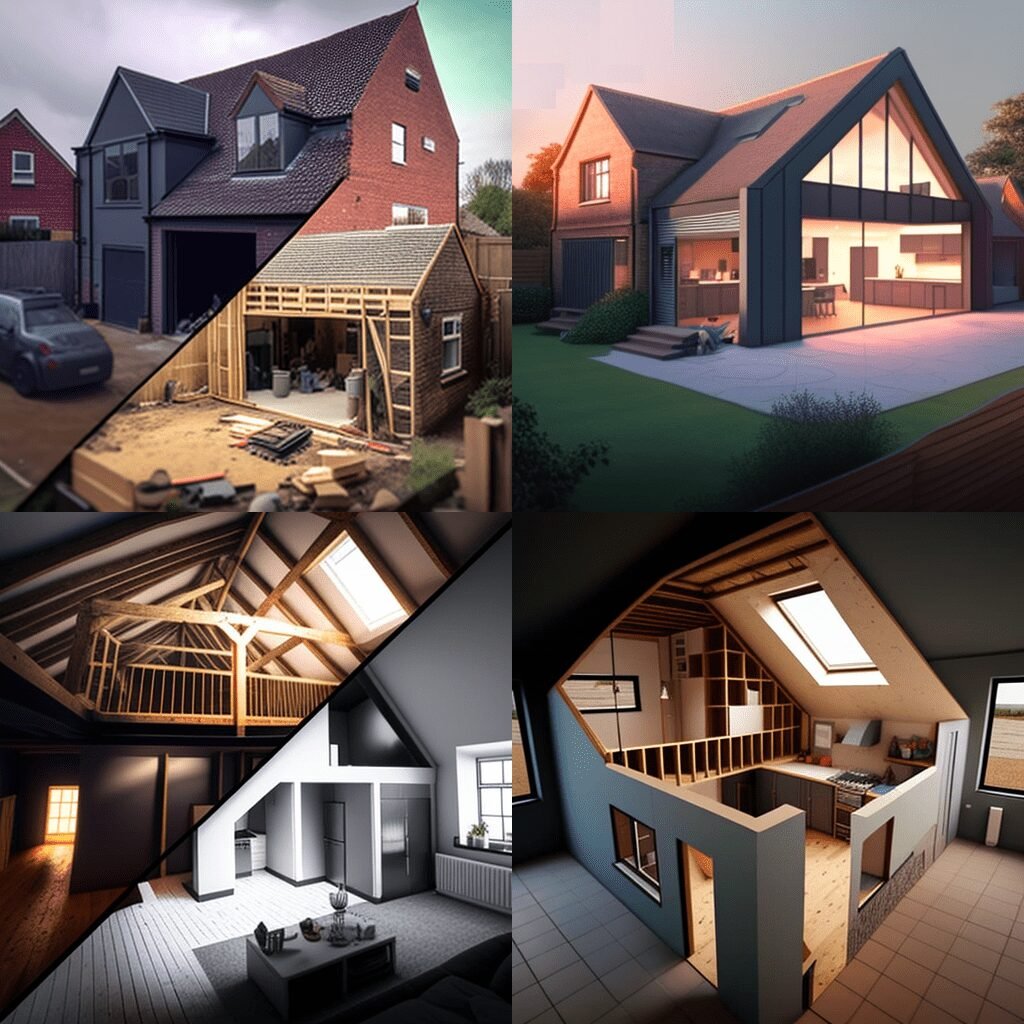

House extensions can unlock the true potential of your property, offering a plethora of benefits. With more living space, you can cater to growing families, create dedicated workspaces, or enjoy indulgent amenities. House extensions also provide an opportunity to improve the functionality and flow of your home, contributing to a better daily living experience. Moreover, these additions can significantly increase your property’s value, making it an attractive investment for prospective buyers. When contemplating a house extension, it is essential to consider factors such as local planning laws, building regulations and budget constraints. Proper planning and execution are crucial to ensuring that the extension blends seamlessly with the existing structure and meets all safety requirements. It’s also important to hire experienced professionals who understand the nuances of house extensions and can deliver quality workmanship. There are several types of house extensions such as single-story or multi-story extensions, conservatories or orangeries. Each type has its own set of advantages and disadvantages depending on your needs. For example, single-story extensions are ideal for expanding living spaces while multi-story extensions offer more flexibility in terms of design options. Ultimately, extending your house can be a sound investment that enhances both your lifestyle and property value. It’s important to carefully weigh the costs and benefits before embarking on this project and work with reputable professionals who can help bring your vision to life.
House Extension Planning Permission
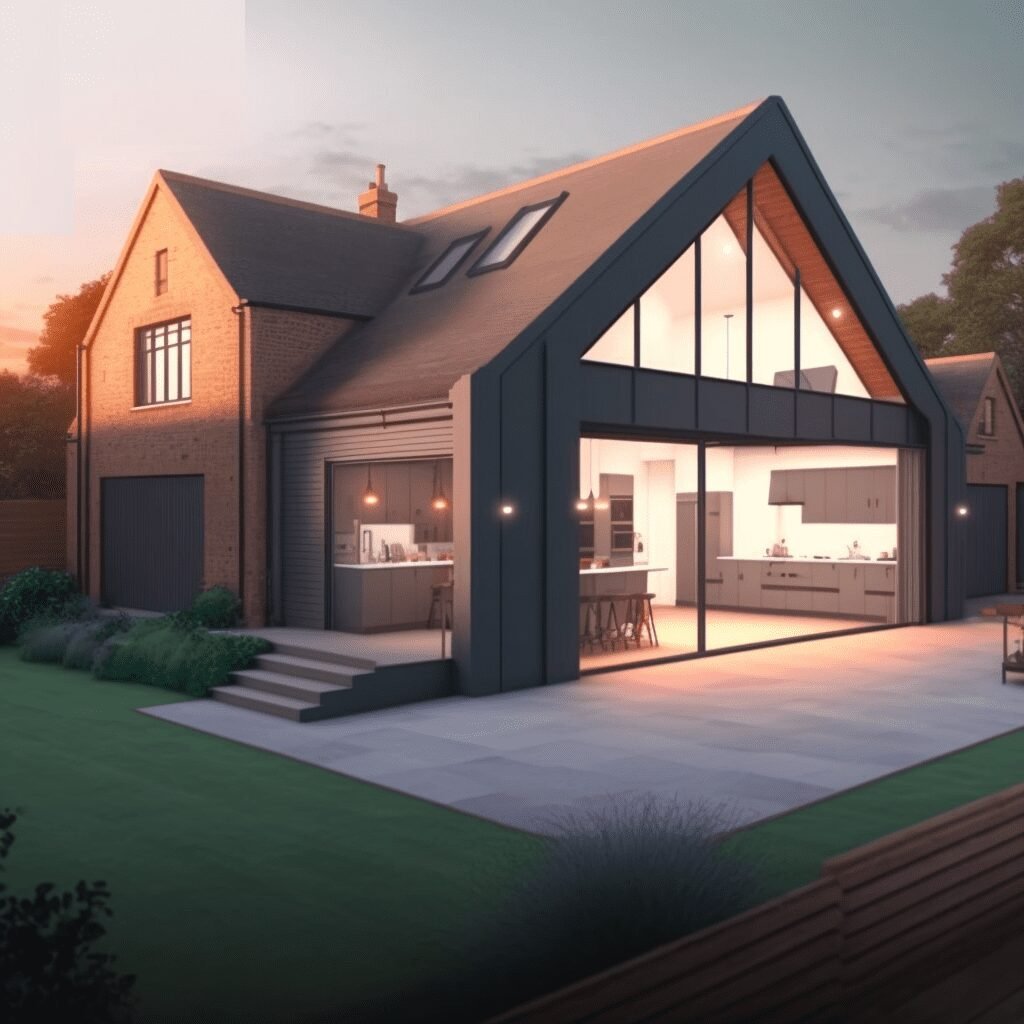

Understanding the Planning Permission Process
If you’re planning to extend your house, it’s essential to know the planning permission process in the UK. Different types of extensions may require planning permission, while others fall under permitted development rights. Knowing the regulations and guidelines set by local planning authorities can help ensure a smooth and compliant project. It’s important to consider factors such as the size and location of your property, as well as any impact on neighbors and the surrounding environment. Seeking professional advice from an architect or planning consultant can also be beneficial in navigating the planning permission process. Once you have obtained the necessary permits, you can proceed with your house extension with confidence, knowing that it meets all legal requirements.
When is Planning Permission Required?
When it comes to house extensions, planning permission is typically necessary if the changes made significantly alter the appearance of the property, affect neighbouring properties, or involve specific locations or restrictions. Other factors like size, height, and proximity to boundaries also determine whether you require planning permission for your extension . To ensure that you comply with local regulations and avoid any potential legal issues, it’s best to consult with a professional architect or your local planning authority before embarking on your extension . They can provide guidance and advice on whether planning permission is needed and help you navigate the process if it is required.
Types of House Extensions
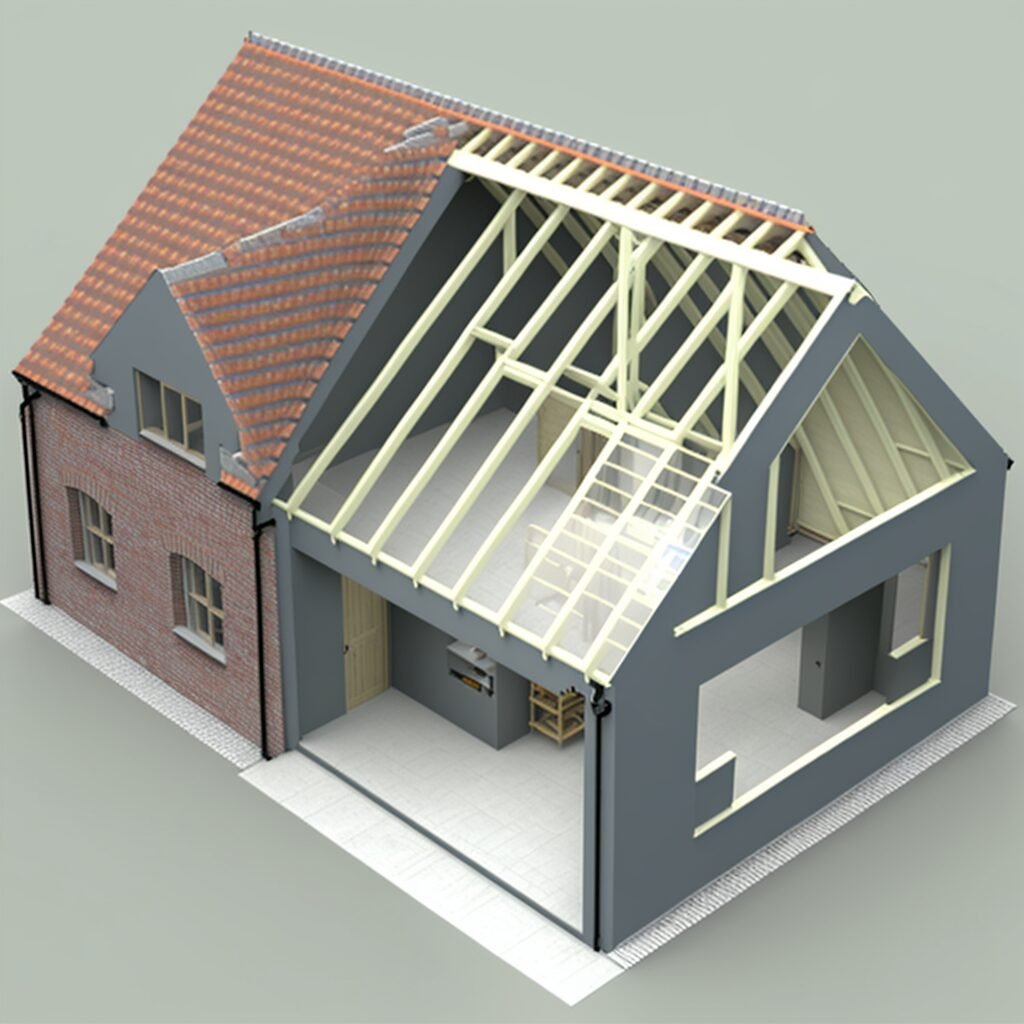

House extensions are a popular way to add more space and functionality to your home. There are several types of house extensions that cater to different needs and preferences. One of the most common types is a rear extension, which extends the back of the house to create additional living space. A side extension can also be added along the side of the house, providing more room for a larger kitchen or dining area. A loft conversion is another popular type of extension that involves converting an existing attic space into a functional living area. Additionally, conservatories and orangeries are popular choices for those who want to create a seamless transition between indoor and outdoor living spaces. Each type of extension has its own unique benefits and considerations, so it’s important to choose the one that best suits your lifestyle and budget.
Single-Storey Extensions
Single-storey extensions provide numerous benefits for homeowners looking to expand their living space. With a single-storey extension, you have the flexibility to create a variety of functional areas tailored to your specific needs. Imagine transforming that cramped kitchen into a spacious culinary haven, or creating a serene lounge area for relaxation and entertainment. The addition of a stylish home office can also offer a dedicated space for productivity and focus.
Moreover, single-storey extensions are often a cost-effective solution compared to multi-storey alternatives. They require fewer structural modifications and can be completed with less complexity, resulting in potential savings on construction costs. This affordability, combined with the versatility they offer, makes single-storey extensions a popular choice among homeowners seeking to improve and expand their living environment.
Two-Storey Extensions
A two-storey extension offers ample opportunities to enhance the functionality and aesthetics of your home. With the additional space, you can create a dedicated home office, a playroom for the kids, or even a home gym to meet your fitness needs. The extra floor allows for better utilization of available land, making it a practical solution for growing families or those desiring more room for various activities.
Moreover, a well-executed two-storey extension can significantly increase the overall value of your property. By expanding the living space and incorporating modern design elements, you not only enhance your own lifestyle but also make your home more appealing to potential buyers in the future. The harmonious blend of old and new architecture creates a visually striking impact, adding to the charm and character of your home.
When considering a two-storey extension, it is crucial to consult with an experienced architect or designer who can guide you through the planning and construction process. They can help you optimize the layout, ensure structural integrity, and advise on the best materials and finishes to achieve a seamless integration between the existing structure and the new extension. With their expertise, you can transform your home into a spacious, functional, and aesthetically pleasing haven for you and your family to enjoy for years to come.
Side Extensions
Side extensions present homeowners with a versatile way to expand their living space without compromising the overall footprint of their property. By utilizing the available space along the side boundary, you can enhance the functionality of existing rooms, such as enlarging the kitchen or creating a spacious dining area for entertaining guests.
In addition, side extensions offer the flexibility to add entirely new rooms to your home. You could design a dedicated home office to cater to remote work needs, a cozy reading nook for relaxation, or a guest bedroom for accommodating visitors. The possibilities are endless, allowing you to tailor the extension to your specific requirements and lifestyle.
Furthermore, side extensions can also be utilized to incorporate practical spaces like garages or utility rooms, providing convenient storage solutions and freeing up valuable space in the main living areas. This not only adds to the functionality of your home but also enhances its overall organization and tidiness.
When planning a side extension, it is essential to consider factors such as natural light, privacy, and the impact on neighboring properties. Working closely with professionals, such as architects and builders, can help you navigate these considerations and ensure a seamless integration between the existing structure and the new extension. By embarking on a side extension project, you have the opportunity to transform your home into a more spacious, functional, and personalized haven that perfectly caters to your needs and preferences.
Conservatory Extensions
A conservatory extension serves as a beautiful extension to your home, allowing you to enjoy the beauty of nature while staying protected from the elements. The abundant natural light that floods into the conservatory creates a bright and airy atmosphere, making it an inviting space to relax, unwind, or entertain guests.
With its seamless connection to the garden, a conservatory becomes a transitional area that blurs the boundaries between indoor and outdoor living. You can indulge in the sights and sounds of nature throughout the seasons, from the vibrant colors of spring flowers to the cozy ambiance of a winter garden. The versatility of a conservatory allows you to adapt the space to your preferences, whether you desire a tranquil retreat for solitude or a vibrant space for social gatherings.
Furthermore, a conservatory extension can be designed to complement the architectural style of your home, adding a touch of elegance and sophistication. Whether you prefer a contemporary design with sleek lines or a more traditional aesthetic with ornate details, there are numerous options available to suit your taste.
When planning a conservatory extension, it is important to consider factors such as insulation, ventilation, and sun protection to ensure optimal comfort throughout the year. Consulting with experts in conservatory design and construction can help you make informed decisions and create a space that seamlessly integrates with your existing home.
By adding a conservatory extension, you not only expand your living space but also create a sanctuary that allows you to connect with nature and enjoy the beauty of your surroundings. It becomes a cherished part of your home, providing endless possibilities for relaxation and enjoyment throughout the seasons.
Maximizing Space and Storage in House Extensions
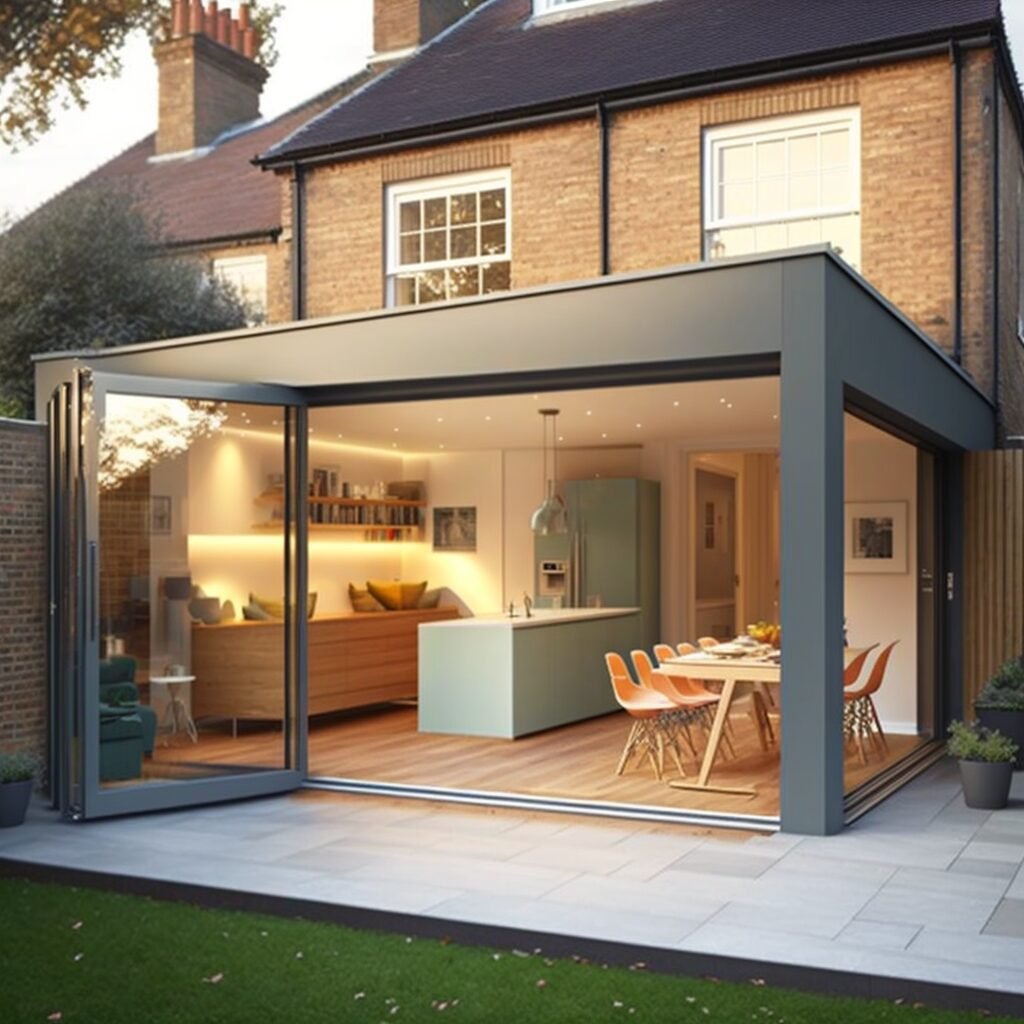

When planning your house extension, it’s essential to consider how you can maximize space and storage. Clever design solutions such as built-in wardrobes, under-stair storage, and loft conversions can help you make the most of every inch. Incorporating multifunctional furniture and utilizing vertical space can also contribute to efficient utilization of the extended area. By prioritizing storage and space optimization, you can create a clutter-free and organized living environment.
Designing Your Home Extension
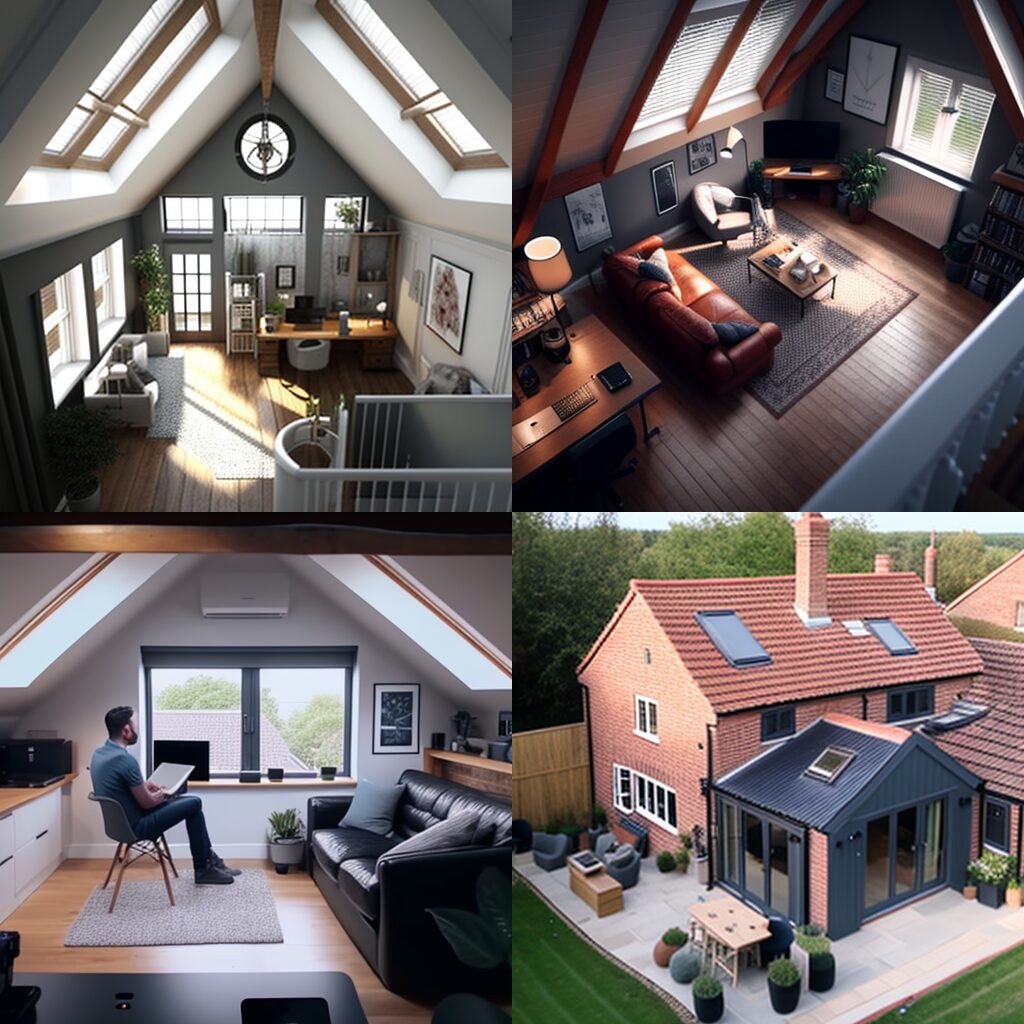


Working with an Architect
When it comes to designing your house extension, enlisting the expertise of an architect is highly recommended. An architect will collaborate with you to translate your vision into a practical and aesthetically pleasing design. They will consider factors such as site constraints, building regulations, and your specific requirements, ensuring that the extension complements your existing property while meeting all necessary legal and safety standards.
Choosing the Right Builder for Your House Extension
Selecting a reliable and experienced builder is crucial for the success of your house extension . Consider factors such as their portfolio, client testimonials, and qualifications. It’s recommended to request multiple quotes and compare them based on cost, timeline, and quality of work. Don’t hesitate to ask for references or visit completed projects to assess the builder’s expertise. By choosing the right builder, you can ensure a smooth and satisfactory extension experience.
Building Regulations and Compliance
Building regulations are an essential aspect of any project. They ensure that the construction meets minimum standards for health, safety, accessibility, and energy efficiency. From structural stability to fire safety and insulation, compliance with building regulations is crucial. Your architect or builder will guide you through the process, ensuring that your extension meets all necessary requirements.
Budgeting and House Extension Cost Considerations
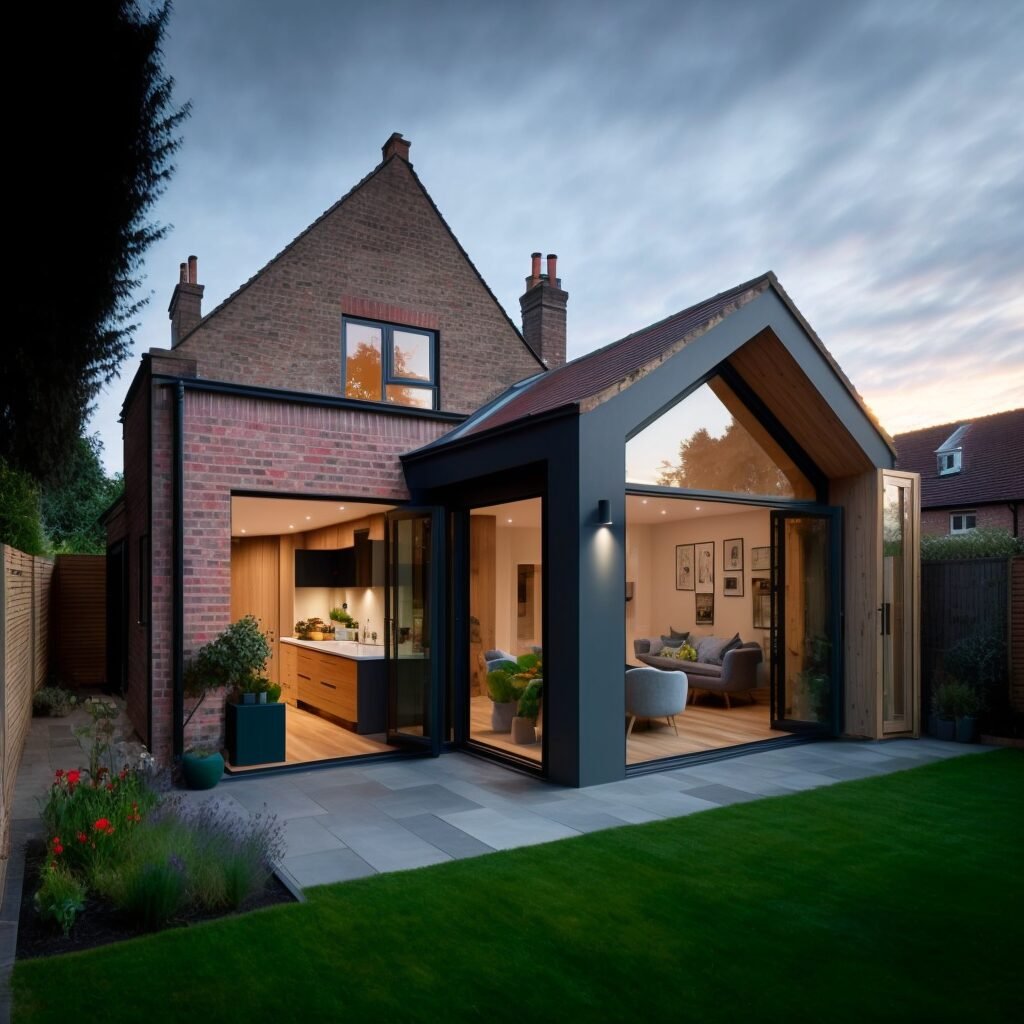

Estimating the Cost of Building an Extension
Before embarking on a house extension, it’s vital to establish a realistic budget. The cost can vary significantly based on factors such as the size, complexity, location, materials used, and level of customization. It’s advisable to obtain quotes from multiple builders and consult with professionals to estimate the cost accurately. Keep in mind that unexpected expenses may arise during the construction process, so it’s wise to include a contingency fund in your budget.
Factors Affecting the Cost
Several factors influence the cost of a house extension. These include the size of the extension, the quality of materials and finishes, the complexity of the design, site accessibility, and the location of your property. It’s essential to strike a balance between your desired outcome and your available budget. Consulting with builders, architects, and quantity surveyors can help you make informed decisions regarding cost-effective choices without compromising on quality.
House Extension Cost Considerations
When considering the cost of your house extension, it’s important to factor in the following:
Size and complexity: Larger extensions with intricate designs will generally incur higher costs due to increased materials and labor requirements.
Materials and finishes: The choice of materials and finishes can significantly impact the cost. Higher-quality materials and premium finishes will generally come at a higher price.
Structural changes: If your extension involves structural modifications to the existing property, such as removing load-bearing walls, the cost may increase due to the additional engineering and construction work involved.
Site accessibility: Limited access to the construction site can make the project more challenging and potentially increase costs. Difficulties in transporting materials and equipment to the site may require additional time and resources.
Location: The location of your property can influence the cost of the extension. Factors such as local labor rates, availability of construction materials, and regional building regulations can vary, impacting the overall cost.
It’s crucial to discuss your budget and cost considerations with your architect, builder, or quantity surveyor. They can provide guidance on cost-effective options, help you prioritize your needs, and ensure that your project remains within your financial means.
Remember that while cost is an important factor, it’s also essential to balance it with the overall value the extension will bring to your home. By carefully planning and budgeting, you can embark on a house extension that not only meets your needs but also provides a solid return on investment by increasing the value of your house.
Incorporating Sustainable Design in House Extensions
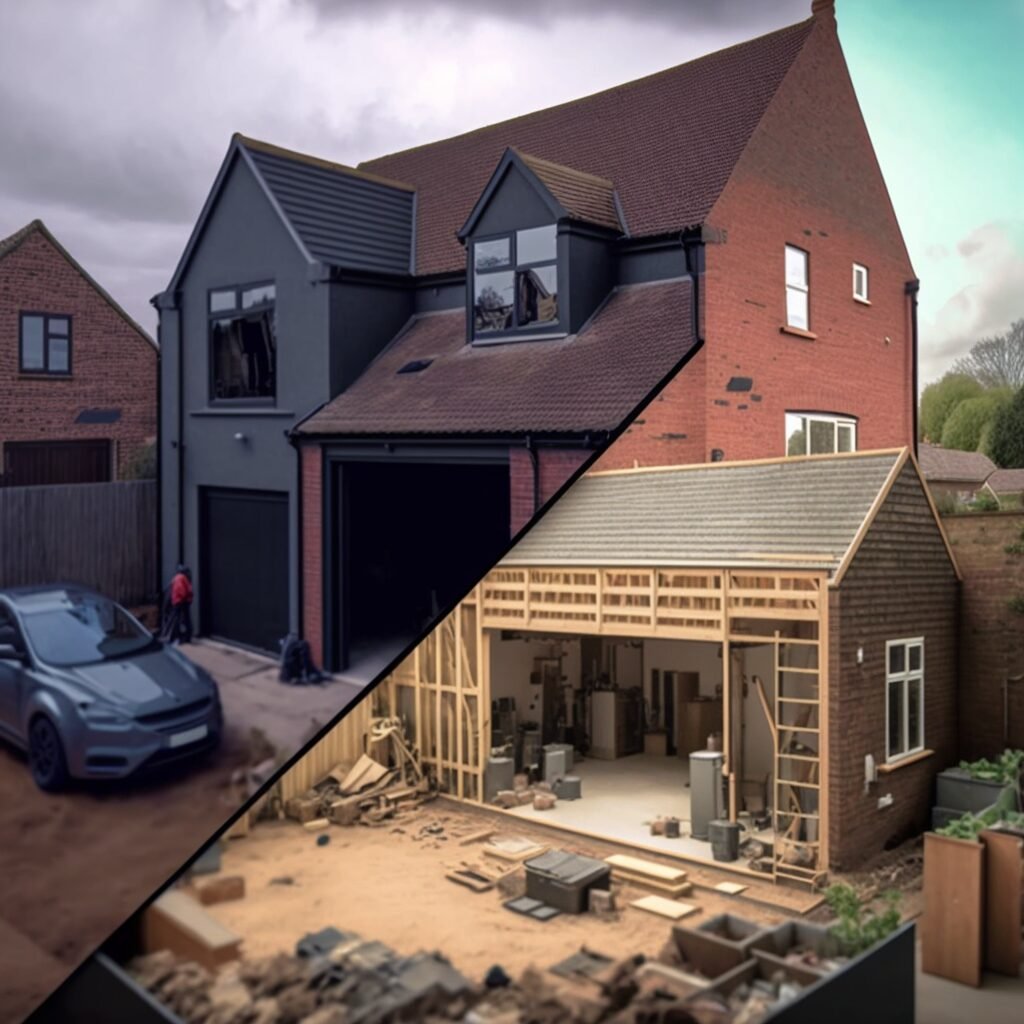

In today’s environmentally conscious world, integrating sustainable design practices into your house extension can have long-term benefits. Consider energy-efficient solutions such as solar panels, LED lighting, and insulation upgrades to reduce your carbon footprint and lower utility bills. Utilize sustainable materials and finishes, such as recycled or locally sourced options, to minimize environmental impact. By embracing sustainable design principles, you not only contribute to a greener future but also enhance the market value of your house.
Adding Value to Your Property


How House Extension Can Increase Property Value
One of the significant benefits of house extensions is their potential to increase the value of your property. Well-executed extensions that enhance the functionality and appeal of your home can attract potential buyers and justify a higher price. When planning your extension, consider the preferences of future buyers and opt for design elements and features that have broad appeal. Balancing your personal needs and the potential for a return on investment can significantly impact the resale value of your home.
Considerations for Maximizing Value
To maximize the value added by your house extension, consider the following:
Design with versatility in mind: Create spaces that can easily adapt to different uses and lifestyles.
Harmonize with the existing property: Ensure that the extension complements the architectural style and character of your home.
Focus on quality: Use high-quality materials, finishes, and fixtures to create a lasting impression.
Optimize natural light: Incorporate large windows, skylights, and glazed doors to maximize the influx of natural light.
Emphasize energy efficiency: Implement sustainable design features and energy-efficient technologies to appeal to eco-conscious buyers.
Popular House Extension Ideas


Creative and Innovative Design Ideas
The world of house extensions is brimming with creativity and innovation. Here are some popular ideas to inspire your project:
Open-plan living: Creating spacious, interconnected living areas that encourage social interaction.
Kitchen extensions: Expanding your kitchen to accommodate a modern, functional culinary space.
Home office or study: Designing a dedicated workspace to meet the demands of remote work and study.
Garden room: Connecting your home with nature by adding a cozy retreat overlooking the garden.
Gym or wellness area: Carving out space for fitness and relaxation within your own home.
Inspiring Examples from Successful Projects
To further ignite your imagination, here are a few examples of successful projects:
The Light-Filled Oasis: A rear extension featuring floor-to-ceiling windows that flood the space with natural light, blurring the boundaries between indoors and outdoors.
The Contemporary Kitchen Hub: A sleek and modern kitchen extension with an island centerpiece, creating a vibrant gathering place for family and friends.
The Tranquil Garden Retreat: A conservatory extension nestled amidst lush greenery, providing a serene space for relaxation and rejuvenation.
The Multi-Functional Loft: A loft conversion transformed into a versatile living area, accommodating a home office, a cozy reading nook, and additional storage.
Permitted Development - House Extension



Understanding Permitted Development Rights
Permitted development rights allow you to carry out specific types of building work without the need for planning permission. These rights offer flexibility and convenience for smaller-scale extensions, ensuring a streamlined process. However, it’s essential to familiarize yourself with the limitations and conditions of permitted development to avoid potential complications or non-compliance.
When Permitted Development Rights Apply
Permitted development rights apply to various aspects of house extensions, including the size, height, and location of the extension. It’s important to note that specific restrictions may exist in certain areas, such as conservation areas or properties with previous modifications. Consulting with a professional or your local planning authority can provide clarity on whether your proposed extension falls within permitted development rights.
Future-Proofing Your House Extension
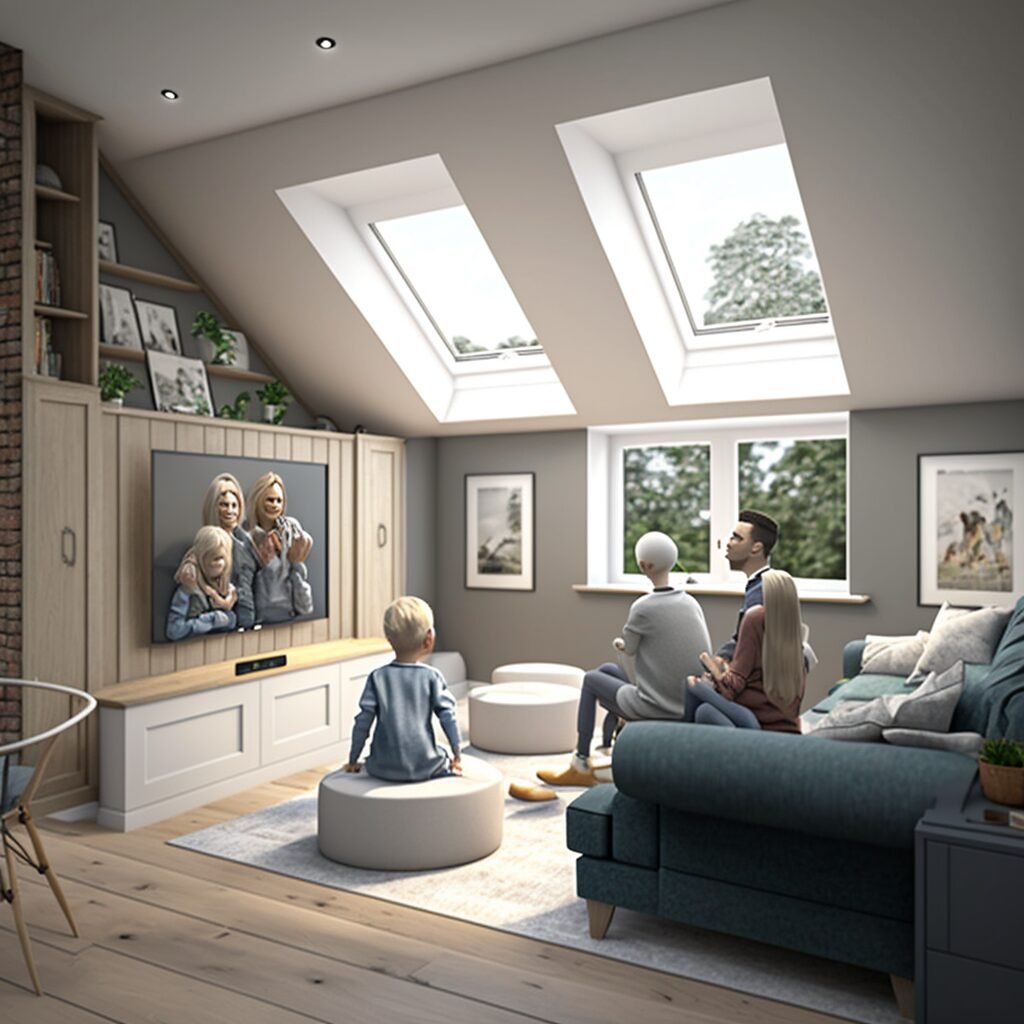

When planning your house extension, it’s wise to future-proof your design to accommodate changing needs and trends. Consider flexible spaces that can adapt to different uses over time. Incorporate technology infrastructure to support smart home features and advancements. Additionally, consider incorporating universal design principles to ensure accessibility for all. By future-proofing your house extension, you can ensure its longevity and relevance in the years to come.
Conclusion
House extensions provide homeowners with a remarkable opportunity to enhance their living space, increase property value, and create a personalized haven. By understanding the planning permission process, exploring different types of extensions, collaborating with professionals, considering budget and cost factors, and maximizing the value added, you can embark on a successful project that transforms your house into a dream home. So, take the first step towards unlocking the full potential of your property and embark on your house extension journey today.
Unleash the potential of your upcoming project—get in touch with us today!
Are you excited to kickstart your next project? Your search ends here with SECalcs! Our team of expert engineers is dedicated to providing exceptional services, such as design and analysis, site inspections, and project management. We understand that each project is unique, so we take the time to comprehend your specific needs and deliver customized solutions. Contact us today to discuss your project requirements and receive a personalized quote. Let us help you turn your vision into a concrete reality!
- Sunday: Closed
- Monday - Thursday: 9AM - 7PM
- Friday: 9AM - 5PM
Frequently Asked Questions (FAQs)
In certain cases, house extensions can be carried out without planning permission under permitted development rights. However, it’s important to review the specific limitations and conditions to ensure compliance.
The duration of the planning permission process can vary. It’s advisable to allow for a minimum of eight weeks for a decision to be reached. However, more complex projects or those requiring additional consultations may take longer.
The cost of a house extension depends on various factors, including the size, design, materials used, and location. It’s recommended to obtain quotes from multiple builders and consult professionals to estimate the cost accurately.
A well-designed and executed house extension has the potential to increase the value of your property. However, it’s important to consider market trends, location, and buyer preferences when planning your extension.
While not mandatory, working with an architect can significantly benefit your house extension. An architect will ensure that your design meets legal and safety requirements, maximizes functionality, and adds aesthetic appeal to your home.



- Head Office: Corwell Lane, Uxbridge, England, UB8 3DE.
- + (44) 07359 267907
- info@structuralengineercalcs.com


